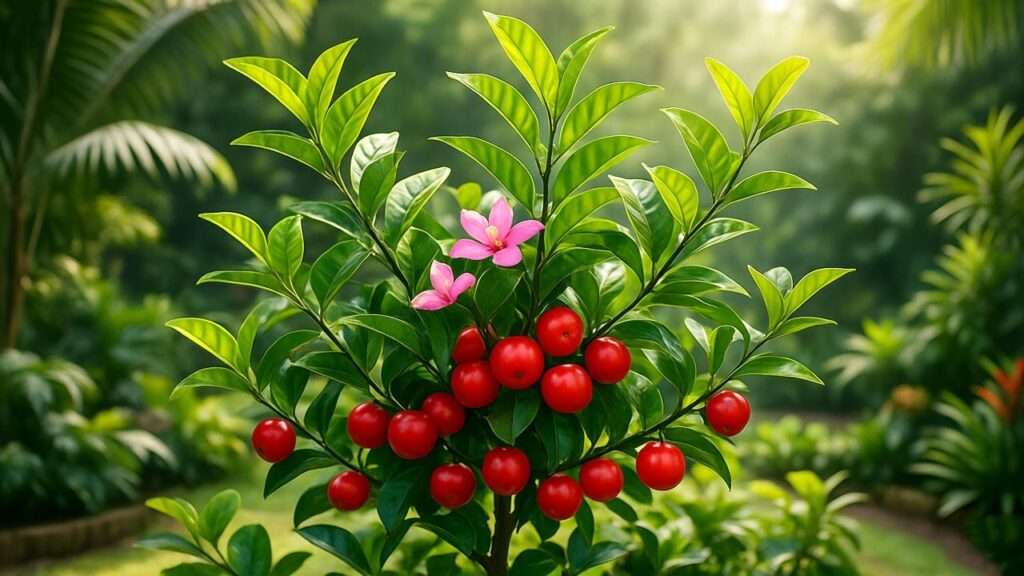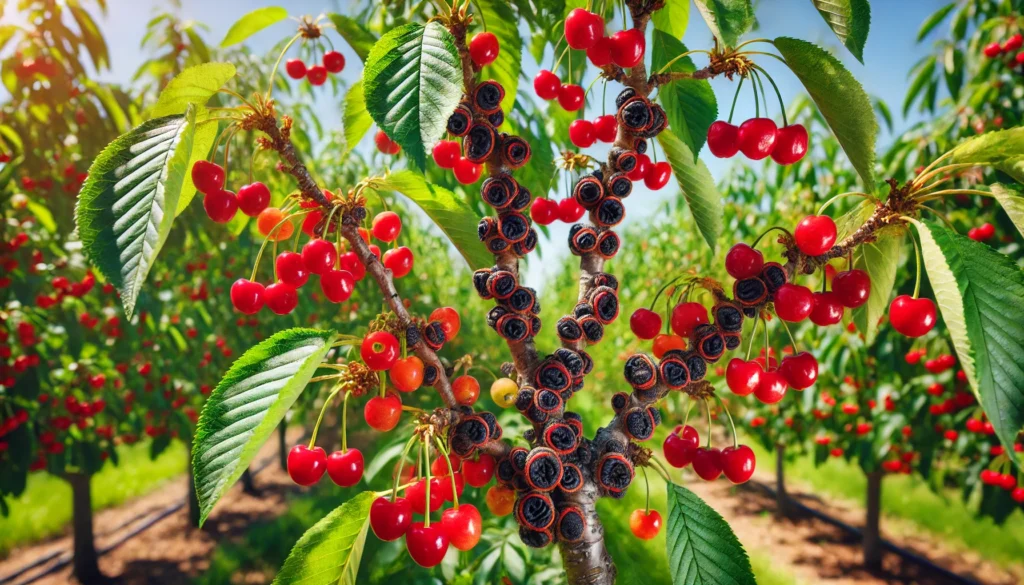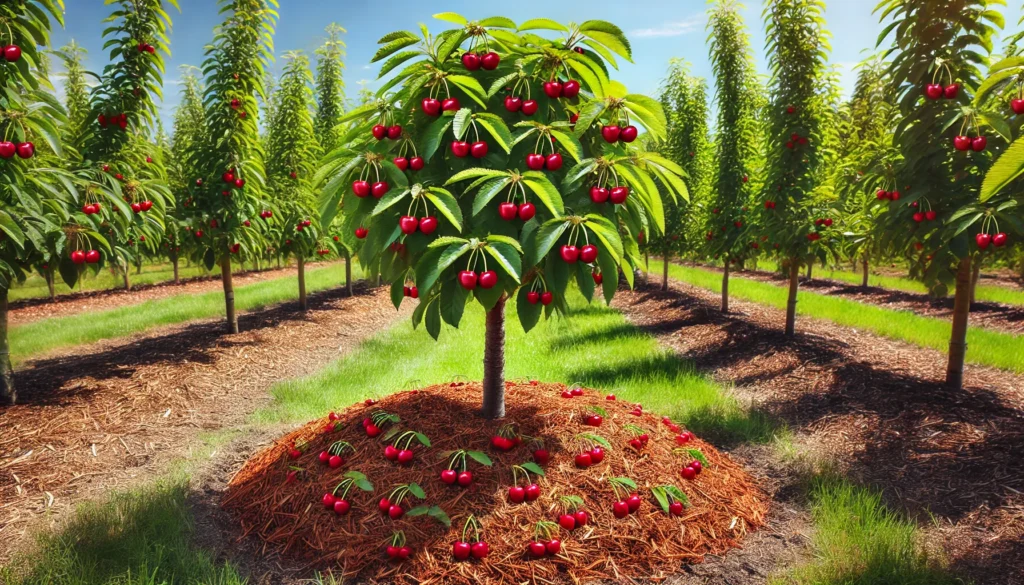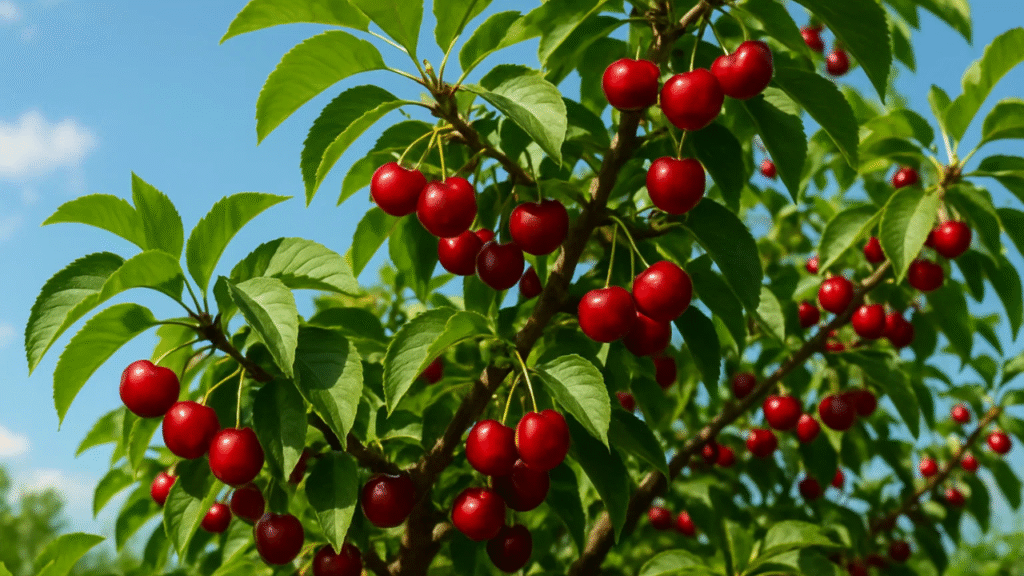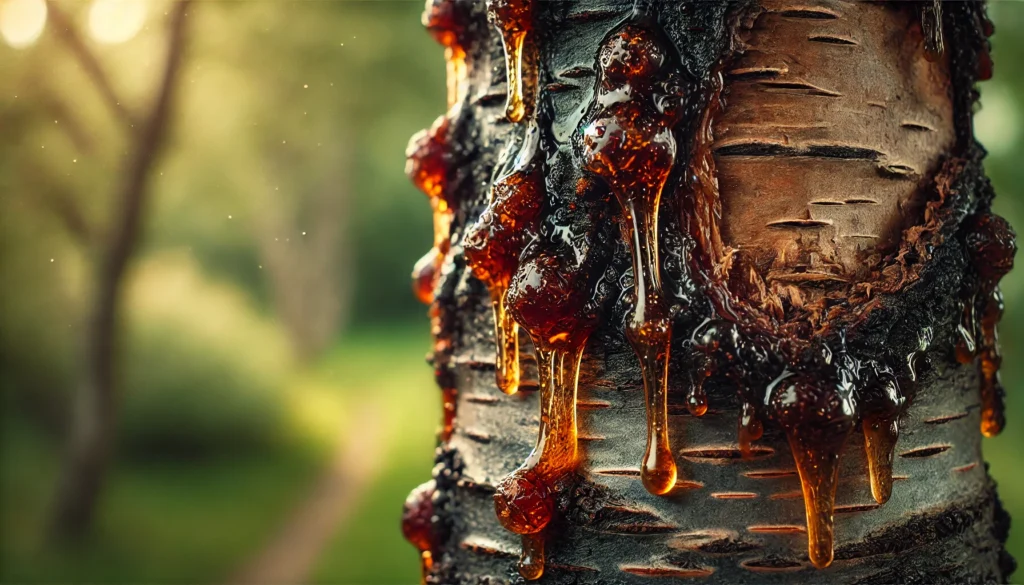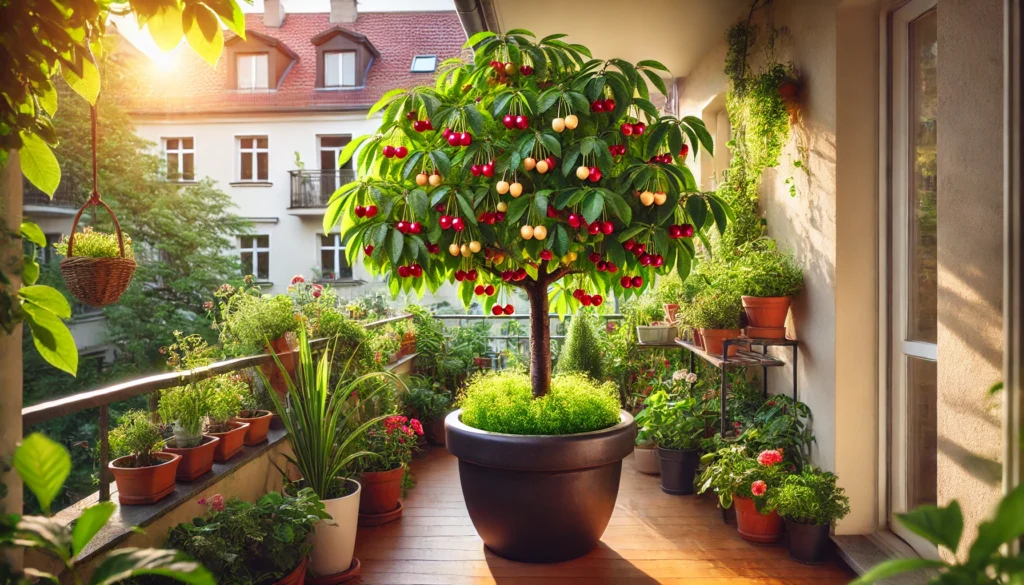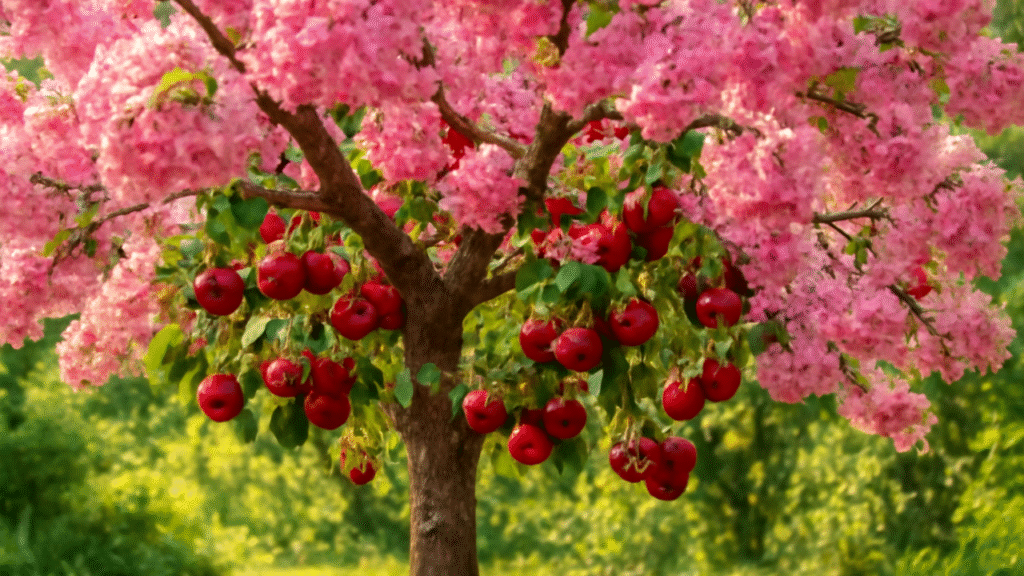Imagine plucking vibrant, vitamin C-packed cherries right from your backyard, bursting with flavor and nutrition! The acerola cherry plant (Malpighia emarginata) is a tropical treasure that’s easier to grow than you might think, even for beginners. Whether you’re dreaming of a lush garden shrub or a potted patio gem, this guide unlocks the secrets to cultivating a thriving acerola cherry plant. As a horticulturist with over a decade of experience in tropical fruit cultivation, I’ve seen countless gardeners transform their spaces with this nutrient-rich plant. From planting to harvesting, this comprehensive guide covers everything you need to grow acerola cherries successfully, troubleshoot common issues, and enjoy a bountiful harvest. Let’s dive into the world of acerola cherry care and turn your garden into a fruity paradise! 🌞
1. Understanding the Acerola Cherry Plant 🌿
1.1 What Is an Acerola Cherry Plant?
The acerola cherry plant, scientifically known as Malpighia emarginata, is a small, evergreen shrub or tree native to Central and South America. This tropical beauty typically grows 6–20 feet tall, depending on conditions, and boasts glossy green leaves, delicate pink flowers, and small, bright red or orange cherries. Unlike true cherries, acerola cherries are tart, juicy, and renowned for their exceptional nutritional profile. A single cherry can contain up to 100 times the vitamin C of an orange, making it a superfood for health-conscious gardeners.
1.2 Why Grow an Acerola Cherry Plant?
Why add an acerola cherry plant to your garden? Beyond its nutritional powerhouse status, this plant offers multiple benefits:
- Health Boost: Acerola cherries are packed with vitamin C, antioxidants, and vitamins A and B, supporting immunity and skin health.
- Aesthetic Appeal: Its lush foliage and vibrant fruit make it a stunning addition to gardens or patios.
- Versatility: Perfect for small spaces, containers, or larger landscapes.
- Eco-Friendly: Attracts pollinators like bees and butterflies 🐝, enhancing biodiversity.
Whether you’re a seasoned gardener or a novice, the acerola cherry plant delivers both beauty and bounty.
2. Optimal Growing Conditions for Acerola Cherry Plants ☀️
2.1 Climate and Temperature Requirements
Acerola cherry plants thrive in tropical to subtropical climates, ideally in USDA hardiness zones 9b–11. They flourish in temperatures between 65–85°F (18–29°C) and are sensitive to frost. In cooler regions, growing acerola indoors or in a greenhouse is a viable option. For outdoor plants in borderline zones, protect them during winter with frost blankets or by moving potted plants indoors ❄️. Consistent warmth is key to healthy growth and fruit production.
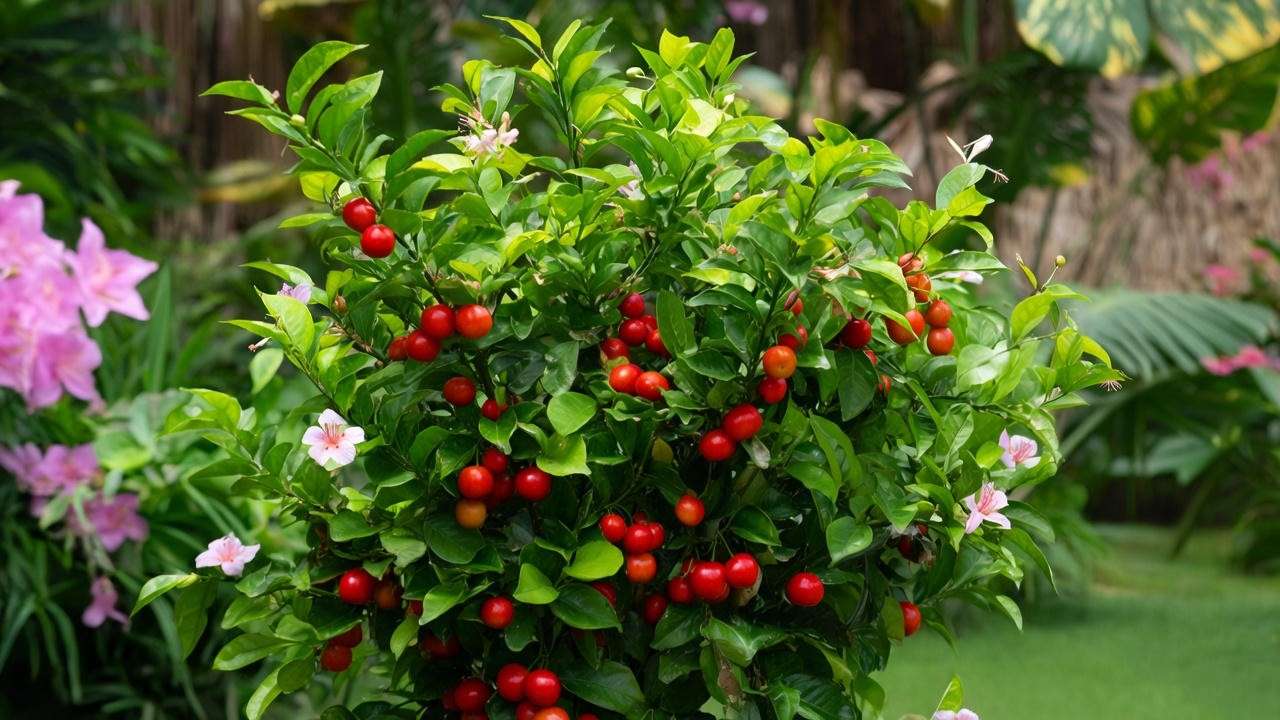
2.2 Soil Preferences
Acerola cherries prefer well-draining, slightly acidic soil with a pH of 5.5–6.5. Test your soil with a pH kit (available at garden centers) and amend it with organic matter like compost or peat moss to achieve the ideal acidity. Sandy loam or loamy soil works best, as it retains nutrients while preventing waterlogging. If your soil is heavy clay, incorporate perlite or sand to improve drainage.
2.3 Sunlight and Watering Needs
- Sunlight: Acerola cherry plants crave full sun, requiring 6–8 hours of direct light daily for optimal fruiting ☀️. Place them in a south-facing spot or ensure unobstructed light in containers.
- Watering: Keep soil consistently moist but not soggy. Water deeply once or twice weekly, adjusting for rainfall. Established plants are somewhat drought-tolerant but produce better fruit with regular moisture.
- Expert Tip: Apply a 2–3-inch layer of organic mulch (like bark or straw) around the base to retain moisture and regulate soil temperature.
3. Planting Your Acerola Cherry Plant 🌱
3.1 Choosing the Right Plant
Start with a healthy plant from a reputable nursery or online supplier. Look for vibrant green leaves, no signs of pests, and a sturdy root system. You can grow acerola from seeds, but cuttings or grafted plants are faster and more reliable for fruit production. Seeds may take years to bear fruit and vary in quality, while cuttings ensure genetic consistency. Trusted sources like local nurseries or online retailers specializing in tropical plants are your best bet.
3.2 Step-by-Step Planting Guide
- Timing: Plant in spring or early summer when temperatures are warm, allowing roots to establish before winter.
- Site Preparation: Choose a sunny, well-draining spot. Dig a hole twice as wide and as deep as the root ball. Mix soil with compost for nutrient-rich planting.
- Planting: Place the plant in the hole, ensuring the root crown is level with the soil surface. Backfill, tamp gently, and water thoroughly.
- Spacing: Space multiple plants 10–15 feet apart to allow for growth and airflow.
For ground planting, ensure proper drainage to prevent root rot. In small spaces, opt for container planting.

3.3 Container Gardening Tips
Acerola cherry plants thrive in containers, making them ideal for patios or urban gardens. Choose a pot at least 18–24 inches in diameter with drainage holes. Use a high-quality potting mix blended with compost and perlite for drainage. Repot every 2–3 years or when roots become crowded. Keep containers in full sun and monitor watering closely, as pots dry out faster than ground soil.
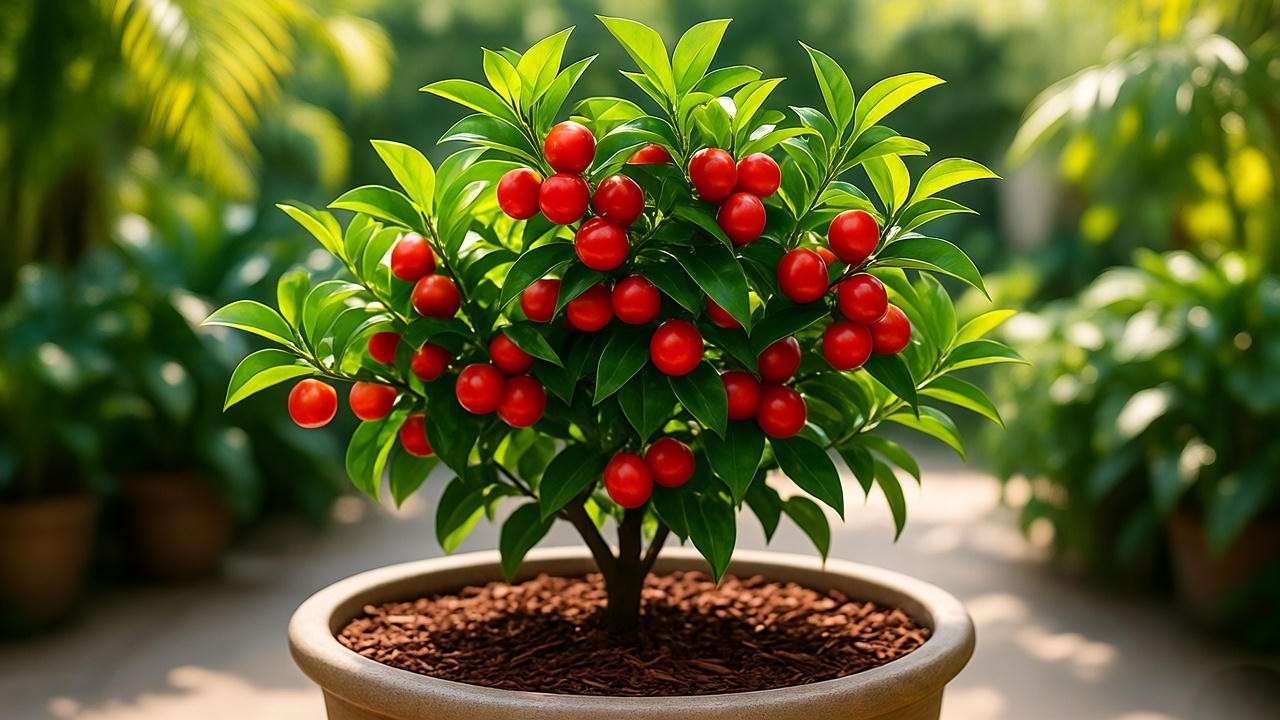
4. Essential Care Tips for a Thriving Acerola Cherry Plant 🌳
4.1 Watering Schedule
Water young acerola plants deeply once or twice weekly, ensuring the top 1–2 inches of soil dry out between waterings. Overwatering can lead to root rot, while underwatering causes leaf drop. Use a moisture meter for container plants to ensure precision. In humid climates, reduce watering frequency to avoid soggy soil. Signs of overwatering include yellowing leaves, while wilting or crispy leaves indicate underwatering.
4.2 Fertilizing for Healthy Growth
Feed your acerola cherry plant with a balanced fertilizer (e.g., 10-10-10 NPK) or a citrus-specific formula every 4–6 weeks during the growing season (spring to fall). Reduce fertilization in winter to avoid stressing the plant. Organic options like compost tea or fish emulsion provide eco-friendly nutrients 🌿. Always water after fertilizing to prevent root burn. A potassium-rich fertilizer can enhance fruit flavor and quality.
4.3 Pruning and Maintenance
Prune in late winter or early spring to remove dead or damaged branches and shape the plant. Light pruning encourages airflow and fruit production. Use clean, sharp shears to avoid spreading disease, and sanitize tools with rubbing alcohol between cuts. Remove suckers at the base to focus energy on fruit-bearing branches. Regular maintenance, like clearing fallen leaves, prevents pest and disease buildup.
5. Pest and Disease Management 🐛
5.1 Common Pests
Acerola cherry plants may attract aphids, scale insects, and spider mites. Inspect leaves regularly for sticky residue (aphids), small bumps (scale), or fine webbing (spider mites). Control pests with:
- Organic Solutions: Neem oil or insecticidal soap, applied in the early morning or late evening.
- Beneficial Insects: Introduce ladybugs or lacewings to naturally reduce pest populations.
- Prevention: Companion plant with marigolds or basil to deter pests.
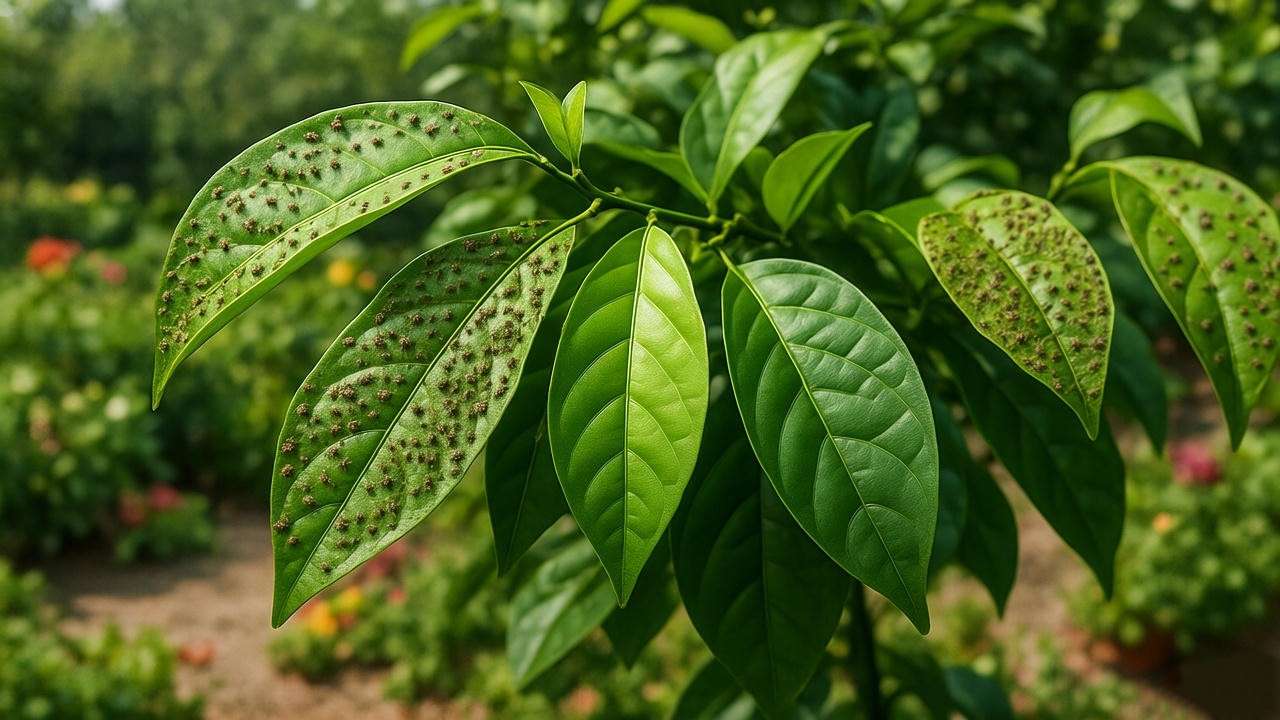
5.2 Common Diseases
Fungal diseases like anthracnose (dark spots on leaves/fruit) and powdery mildew (white coating) can affect acerola plants. Bacterial leaf spot causes water-soaked lesions. Prevent diseases by:
- Ensuring good air circulation through proper spacing and pruning.
- Avoiding overhead watering to keep foliage dry.
- Applying copper-based fungicides for severe cases, following label instructions.
- Expert Tip: Remove and destroy affected plant parts to stop disease spread.
6. Harvesting and Using Acerola Cherries 🍒
6.1 When and How to Harvest
Acerola cherries are ready to harvest when they turn bright red or orange and feel slightly soft to the touch. This typically occurs 3–4 weeks after flowering, with multiple harvests possible in warm climates (up to 3–5 times per year). To harvest, gently twist the cherries off the stem or use clean pruning shears to avoid damaging the plant. Pick in the early morning when fruits are coolest for optimal flavor and shelf life. Regular harvesting encourages further fruit production, so don’t let ripe cherries linger on the plant.

6.2 Storing and Preserving Acerola Cherries
Fresh acerola cherries are highly perishable due to their high vitamin C content. Store them in the refrigerator in a breathable container for up to 2 weeks. For longer preservation:
- Freezing: Wash, dry, and freeze whole cherries in airtight bags for up to 6 months. Perfect for smoothies or baking.
- Drying: Dehydrate cherries at low temperatures (135°F/57°C) to retain nutrients. Store in airtight containers for snacks or baking.
- Jams and Juices: Process cherries into jams, jellies, or juices for a tangy, nutrient-packed treat. Try this simple recipe: Blend 2 cups of acerola cherries with 1 cup water, strain, and sweeten with honey for a refreshing juice 🥤.
Recipe Idea: Acerola Cherry Smoothie – Blend 1 cup frozen acerola cherries, 1 banana, ½ cup Greek yogurt, and a splash of orange juice for a vitamin C-packed breakfast.
7. Troubleshooting Common Acerola Cherry Plant Problems ⚠️
7.1 Why Isn’t My Plant Fruiting?
If your acerola cherry plant isn’t producing fruit, consider these factors:
- Insufficient Sunlight: Ensure the plant receives 6–8 hours of direct sun daily. Relocate container plants or trim nearby shade sources.
- Poor Pollination: Acerola cherries are partially self-pollinating but benefit from cross-pollination. Attract bees with nearby flowers or hand-pollinate using a small brush to transfer pollen between flowers.
- Nutrient Deficiencies: Low potassium or phosphorus can hinder fruiting. Apply a fertilizer high in these nutrients (e.g., 5-10-10 NPK) during the growing season.
- Solution: Adjust light, pollination, and fertilization practices. Be patient, as young plants may take 2–3 years to bear fruit.
7.2 Leaf Drop or Yellowing Leaves
Leaf issues are common but fixable:
- Overwatering: Check for soggy soil or poor drainage. Reduce watering and improve soil aeration with perlite.
- Underwatering: Wilting or crispy leaves indicate dehydration. Increase watering frequency and ensure consistent moisture.
- Nutrient Imbalance: Yellowing leaves may signal nitrogen deficiency. Apply a balanced fertilizer and test soil to confirm nutrient levels.
- Pests: Inspect for aphids or spider mites, which can cause leaf drop. Treat with neem oil or insecticidal soap.
7.3 Slow Growth or Stunted Plants
If your acerola cherry plant is growing slowly:
- Soil Quality: Test soil pH and nutrient levels. Amend with compost or organic matter if needed.
- Light and Water: Ensure adequate sunlight and consistent watering. Stunted growth often results from insufficient light or erratic watering.
- Root Issues: Check for root-bound plants in containers. Repot into a larger container if roots are circling.
- Revival Tip: Apply a diluted liquid fertilizer (e.g., fish emulsion) every 2 weeks for a nutrient boost and monitor progress.
8. Expert Tips for Maximizing Acerola Cherry Plant Success 🌟
To take your acerola cherry plant to the next level, try these expert strategies:
- Companion Planting: Pair with pest-repelling plants like marigolds, basil, or lavender to reduce insect issues naturally.
- Seasonal Care Calendar:
- Spring: Fertilize, prune, and monitor for pests.
- Summer: Water consistently, mulch, and harvest ripe cherries.
- Fall: Reduce fertilization and prepare for winter protection.
- Winter: Protect from frost and limit watering for dormant plants.
- Boosting Fruit Flavor: Use a potassium-rich fertilizer (e.g., 0-0-50) during fruit development to enhance sweetness and tanginess.
- Pollination Hack: If pollinators are scarce, gently shake branches during flowering to encourage pollen dispersal.
Expert Quote: “Acerola cherries are a gardener’s dream—low maintenance and high reward. With the right care, they’ll produce nutrient-dense fruit for years,” says Dr. Maria Lopez, a tropical horticulturist with 15 years of experience.
9. FAQs About Acerola Cherry Plant Care ❓
Q: How fast does an acerola cherry plant grow?
A: Acerola cherry plants grow moderately fast, reaching 3–6 feet in 1–2 years under ideal conditions. Fruit production typically begins in 2–3 years for plants grown from cuttings.
Q: Can I grow acerola cherries indoors year-round?
A: Yes, with sufficient light (grow lights if needed), warmth (65–85°F), and a large container. Ensure good air circulation and avoid overwatering.
Q: What’s the best way to propagate acerola cherry plants?
A: Cuttings are the most reliable method. Take 6–8-inch semi-hardwood cuttings in spring, dip in rooting hormone, and plant in a moist, well-draining mix.
Q: How do I protect my plant from cold weather?
A: Use frost blankets, move potted plants indoors, or wrap outdoor plants with burlap. Mulch heavily around the base to insulate roots ❄️.
Q: Are acerola cherries safe for pets or children?
A: The fruit is safe and nutritious for humans, but the leaves and seeds may be toxic to pets. Keep pets away from foliage and consult a vet if ingested.
10. Conclusion
Growing a thriving acerola cherry plant is a rewarding journey that combines beauty, nutrition, and sustainability. By providing the right conditions—full sun, well-draining soil, and consistent care—you can enjoy vibrant foliage and bountiful harvests of vitamin C-rich cherries. From planting to pest management, this guide equips you with expert-backed strategies to overcome challenges and maximize success. Start your acerola cherry adventure today and savor the fruits of your labor! Share your progress, questions, or tips in the comments below, and explore our related articles on tropical fruit gardening for more inspiration 🌱🍒.

